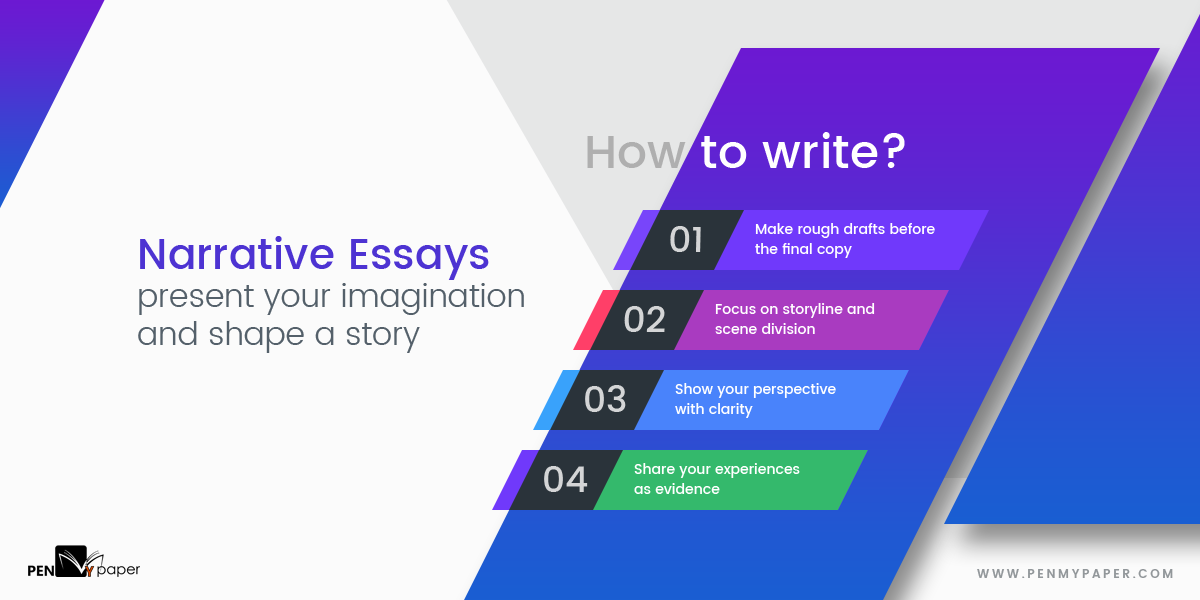How to Write a Narrative Essay: Outline, Examples & Tips

Writing a narrative essay is like telling a great story— but with a purpose. While it may seem easier than other types of essays, it’s not just about recounting events; it’s about crafting an engaging and meaningful experience for your reader. Many students struggle not with writing itself, but with figuring out what to include, how to structure their story, and how to keep it compelling.
A well-written narrative essay requires more than just strong writing skills—it demands a clear focus, logical flow, and the ability to draw readers in from the very first sentence. Whether you’re sharing a personal experience or creating a vivid scene, understanding the fundamentals of narrative writing is key. This guide will walk you through everything you need to know—from structuring your essay to brainstorming topics and adding that extra spark to keep your audience hooked. Ready to turn your ideas into an unforgettable story? Keep reading! And if you ever need expert assistance, an essay writer online can help bring your narrative to life with clarity and creativity.
What is a Narrative Essay?
A narrative essay is about telling or narrating a story about a personal experience, event, or observation. It typically includes elements such as characters, plot, setting, and theme, and is often written in the first-person point of view. The purpose of a narrative essay is to engage the reader, evoke emotions, and provide a lesson or reflection based on the experience or event being shared. Narrative essays are commonly assigned in middle school, high school, and college writing classes, and can be a powerful way for writers to express themselves and connect with their audience.
While narrative essays and descriptive essays share some similarities, they are not the same type of essay. Both may use sensory details and descriptive language; however, the focus and purpose of the essays are different.
To write a successful narrative essay, it’s important to choose a topic that is meaningful to you. This could be a personal experience that taught you a lesson, a memorable event that impacted your life, or an observation that made you see the world in a different way.
Purpose of Narrative Essay Writing
The purpose of narrative essay writing is to tell a story about a personal experience or event that is significant to the writer. This type of essay allows the writer to connect with the reader on a personal level and engage them in a vivid, detailed retelling of the experience.
- Personal Expression: Narrative essays allow students to express their personal experiences, feelings, and perspectives in a creative and meaningful way. This can help students develop their sense of self, as well as develop empathy and understanding for others.
- Build empathy: The primary goal of a narrative essay is to entertain, engage, and emotionally move the reader. By sharing personal experiences, the writer can create a sense of empathy and understanding with the reader, helping them to relate to the story on a deeper level. Additionally, narrative essays can provide insights into the writer’s thoughts, feelings, and perspectives, which can help readers to better understand the writer and the world around them.
- Provide a lesson/convey a message: Another purpose of narrative essay writing is to provide a lesson or message based on the experience being shared. By reflecting on the experience and sharing insights learned, the writer can help readers to gain new perspectives or insights into their own lives. This can be particularly effective when the experience being shared is one that many readers can relate to or learn from.
- Developing Writing Skills: Narrative essay writing helps develop writing skills by providing students with an opportunity to practice writing in a clear, concise, and engaging manner. This can include using descriptive language, crafting effective dialogue, and structuring the essay logically and coherently.
In summary, the purpose of narrative essay writing is to tell a story that is engaging, emotionally moving and provides a lesson or message. By sharing personal experiences and reflections, writers can connect with readers on a personal level and provide valuable insights into the human experience.
Looking for an informative essay outline? Check out the guide and learn how to structure your informative essay effortlessly.
Narrative Essay Types
There are several types of narrative essays, each with its distinct characteristics and purposes. Here are some of the most common types:
- Personal Narrative: This type of narrative essay tells a personal story about an event or experience that the writer has lived through. It is often written in the first-person point of view and includes emotions, thoughts, and reflections of the writer.
- Descriptive Narrative: In this type of narrative essay, the writer uses descriptive language to create a vivid picture of an event or experience. The goal is to transport the reader to the scene and allow them to experience the event through the writer’s eyes.
- Expository Narrative: This type of narrative essay is used to explain or inform the reader about a particular topic or concept. It often uses personal anecdotes or stories to illustrate the main point and make it more relatable to the reader.
- Fictional Narrative: This type of narrative essay is a work of fiction that tells a story using characters, plot, and setting. The goal is to entertain the reader and engage them in the story.
- Historical Narrative: In this type of narrative essay, the writer tells a story about a historical event or period. The goal is to provide a unique perspective on the event and help the reader understand its significance.
- Autobiographical Narrative: This type of narrative essay is similar to a personal narrative, but it focuses specifically on the writer’s life and experiences. It may include childhood memories, life-changing events, and personal growth.
